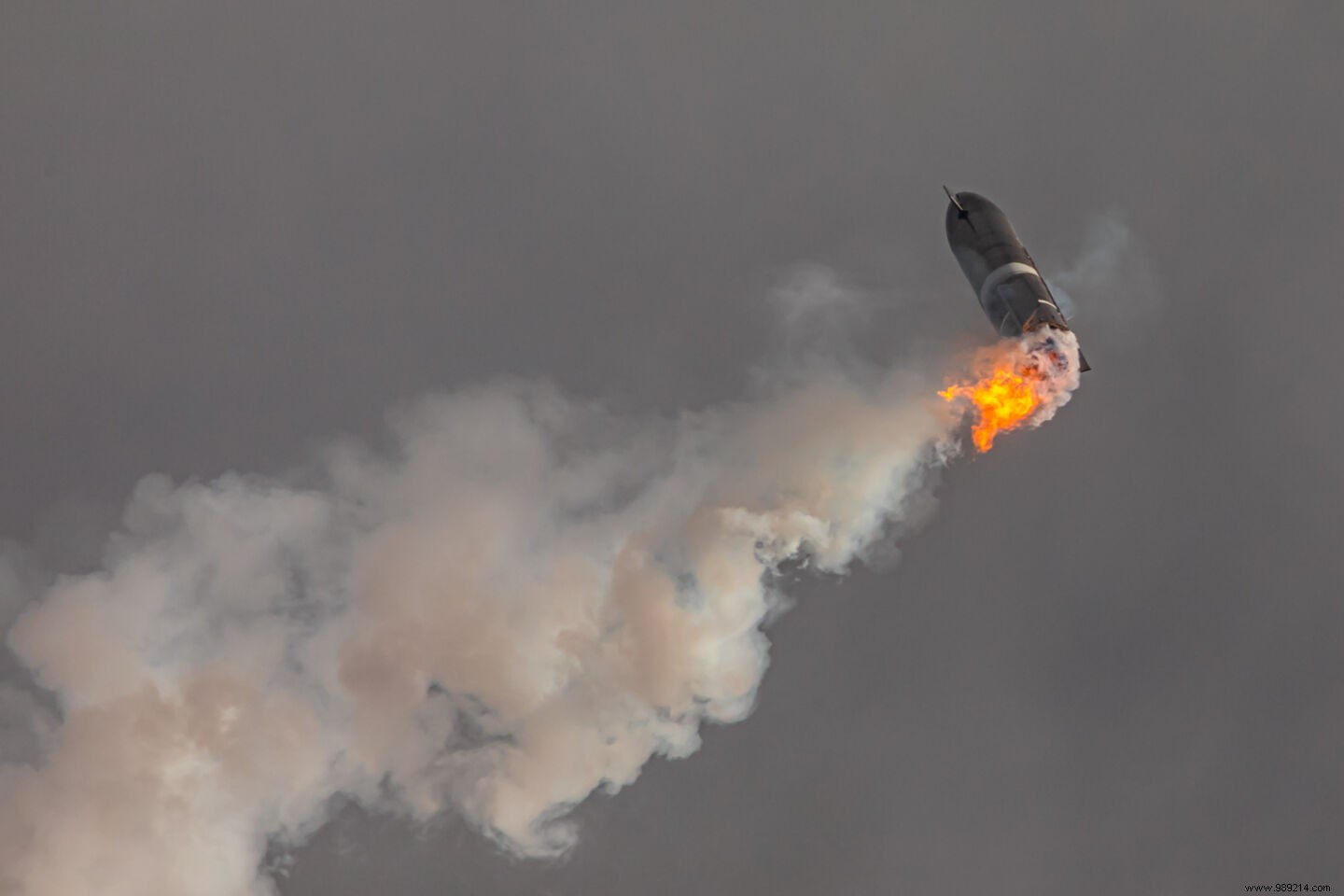Will the SN10 land safely? That was the question everyone was asking Wednesday night about the Starship's third test flight. Answer:yes!… And no. The prototype indeed landed in one piece, before exploding a few minutes later. Nevertheless, this test is still a real success.
For this high-altitude flight, SpaceX engineers had made modifications for the final phase of the flight, following the last crash of the SN9 prototype. After a first failed attempt at less than a second this Wednesday evening, shortly after 9 p.m., the SN-10 finally took off shortly after midnight, before successfully landing on its pad in Boca Chica, Texas. A little crooked, yes, but in one piece. We then declared victory. And for good reason, it was a real first!
The sequel is a little less rosy. A fire was indeed triggered under the rocket at the time of landing. Several fire hoses seemed to bring the incident under control, until a violent explosion propelled the vehicle several tens of meters above the ground. The SN10 is no more, therefore. But it did the job.
The company's founder and chief engineer, Elon Musk, seemed pleased after the flight regardless. "The SpaceX team is doing a great job! One day, the true measure of success will be that Starship flights will be commonplace he tweeted.

Thus the Starship program is progressing very clearly, although, naturally, it is difficult to ignore this new explosion. So what happened for this last test, technically?
Like its predecessors SN8 and SN9, SN10 climbed to an altitude of approximately 10 km before executing a "belly flop" maneuver, beginning its descent back to Earth.
Unlike previous flights, the vehicle had no problem reigniting its Raptor engines. For the first time, all three burst into flames as the prototype approached the ground, then one of them came to a stop, as expected. The SN10 then reoriented itself to a vertical position with its last two engines. Then, again as planned, the vehicle slowly landed on its pad with a single engine.
We know that SpaceX engineers encountered issues with the Starship's stubby landing legs. On this plan, they will be able to make some corrections. It also appeared that the vehicle briefly bounced as it touched down, then a fire broke out at the base. The ship then righted itself, and for about ten minutes it remained there.
Suddenly the vehicle rose several meters above the ground. SpaceX has yet to provide details on what actually happened. However, knowledgeable sources have suggested the crash may have been caused by a methane leak. It is indeed notoriously difficult to operate fuel valves at cryogenic temperatures.
That being said, SpaceX engineers must be delighted to have successfully brushed off the re-ignition issues with the Raptor engines. And for good reason, this essential procedure had been lacking during the first two attempts. The company had also recorded the same problems with the Merlin engines of the Falcon 9, at the beginning. For a spacecraft like the Starship to land after only three attempts at high altitude is therefore quite remarkable.
SpaceX also collected a lot of other significant data during this launch, helping to refine both the ship's design and its flight software. We are therefore impatiently awaiting the test of the SN11 prototype which, in all likelihood, will also attempt a flight at an altitude of ten kilometers.
It remains to be seen how NASA will react to this third test. Will it be considered progress or failure? The question arises, as the American agency prepares to choose the company that will supply the landing system for the Artemis III mission, which provides for the return of humans to the Moon. Given this new crash, NASA may not take the risk and opt for more conventional landers under development proposed by the Blue Origin and Dynetics teams.
That said, remember that the Starship is the subject of a unique development program, progressing in rapid iterations. SpaceX builds a new ship every two or three weeks, giving itself the opportunity to try, fail, try again, and ultimately succeed. And NASA knows it very well.